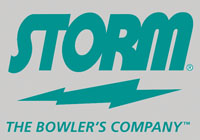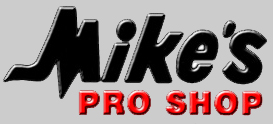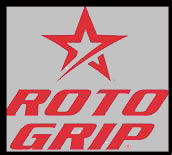 |
|||||||
|
|
by Randy OoneyMy Nickel’s Worth by Randy Ooney
Star Bowling Supply - My Bowling Ball (Part 2)
I didn’t last too long in my first two bowling leagues. By 1968, I acquired a new job which provided me with a place to live, free food, free medical, and free green uniforms, but it required a lot of travel, and they didn’t have bowling centers at some of the places I went. But I returned in 1970, and my teams welcomed me back. One of the things I learned in early bowling years was that Target was probably not the best place to purchase a bowling ball. Interestingly, Target doesn’t sell bowling balls anymore. I guess they don’t want to mess with anything that has to be drilled before it goes out the door. My dentist was good at drilling holes in things, but he didn’t have any one inch drill bits, so I ventured back to St. Louis Park to … Star Bowling Supply.
Star was one of the first bowling stores in the Twin Cities. Mike Schmid opened his pro shop in 1962, but he was in St. Paul. I have nothing against St. Paul. I first heard of them in the fifties when their Saints and our Millers played a split doubleheader every holiday in the summer. Our governors lived there, I’m not sure if any of them bowled. But it was a little far to drive for a bowling ball, so I settled for Star. Star Bowling Supply was owned and operated by Duane Breault, Bill Sandvig, and Jim Sjostrom. Jim and Bill were two of the better bowlers in the area. Duane (Dude) had a handicap and a pronounced limp that inhibited bowling, but he knew the sport and knew the business. We lost Jim a few years back, and I just learned of Duane’s passing this October. I had not seen him for awhile. I used to run into him out at Howard Lake now and then when I went out to troll for those 3 ounce crappies.
In those days, hardness was a big factor in bowling balls. Most places that sold them had an instrument with a steel ball hanging by a string that they would hold up and release and count the number of times it bounced off the ball before it stopped. I never saw anyone actually do it, but there was an air of professionalism having such a high tech device in plain view. I think around 90 was hard and 70 was soft. Plastic balls were softer than rubber balls, but if you dropped one on your foot, they all seemed pretty hard. There was a PBA member, I believe his name was Ned Day, who would soak his plastic ball in some kind of acid to soften it up a little more, to increase the hook potential. He got his hand slapped, (or dipped in acid), and the ABC quickly adopted rules against shenanigans like that. I never tried it, I doubt if it would have helped me much anyway. Duane drilled several Manhattan Rubber balls for me in the 70s, and Jim drilled my Columbia yellow dot caramel. They are still in my garage, no thumb plugs, no finger grips, but I did use the caramel as a spare ball in later years. The big thing was bringing TWO balls into the bowling center on league night, and changing sometime during game two. It never made much difference in the score, but it was a status symbol to use two balls on the same night. Leo did it, and we all wanted to be like Leo. Everyone called their orange colored plastic ball their “caramel”, but I never heard anyone call their rubber ball their “black”.
Star Bowling Supply sponsored many, many bowling teams in the area. It seemed as if every league had a Star Bowling Supply team. They also sold shoes and other accessories for bowling. Wrist supports were not a big thing back then, but shirts and pants were. That’s right, pants. I was on a team that wore white shirts, lavender polyester pants and a wide white belt, and we proudly wore them every week - purchased by our sponsor from Star Bowling. So rest in peace, Duane and Jim, and thank you for your pioneering contributions to our sport.
|





